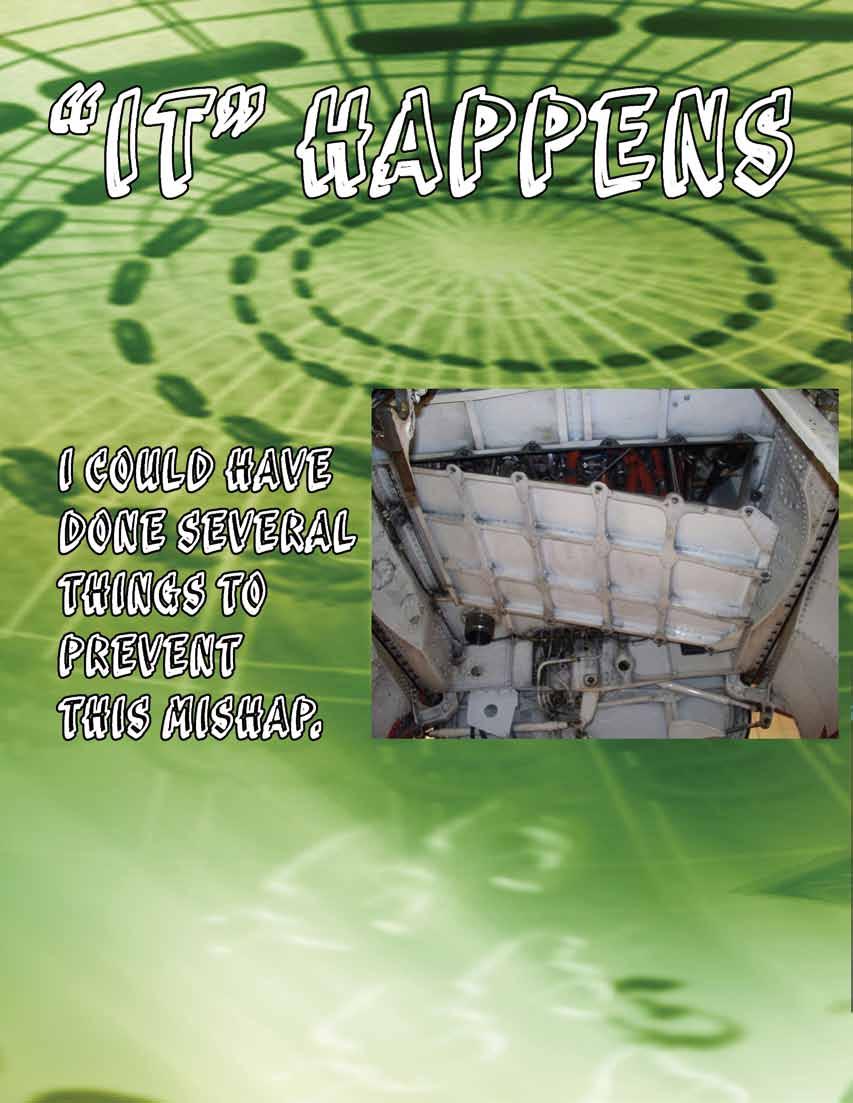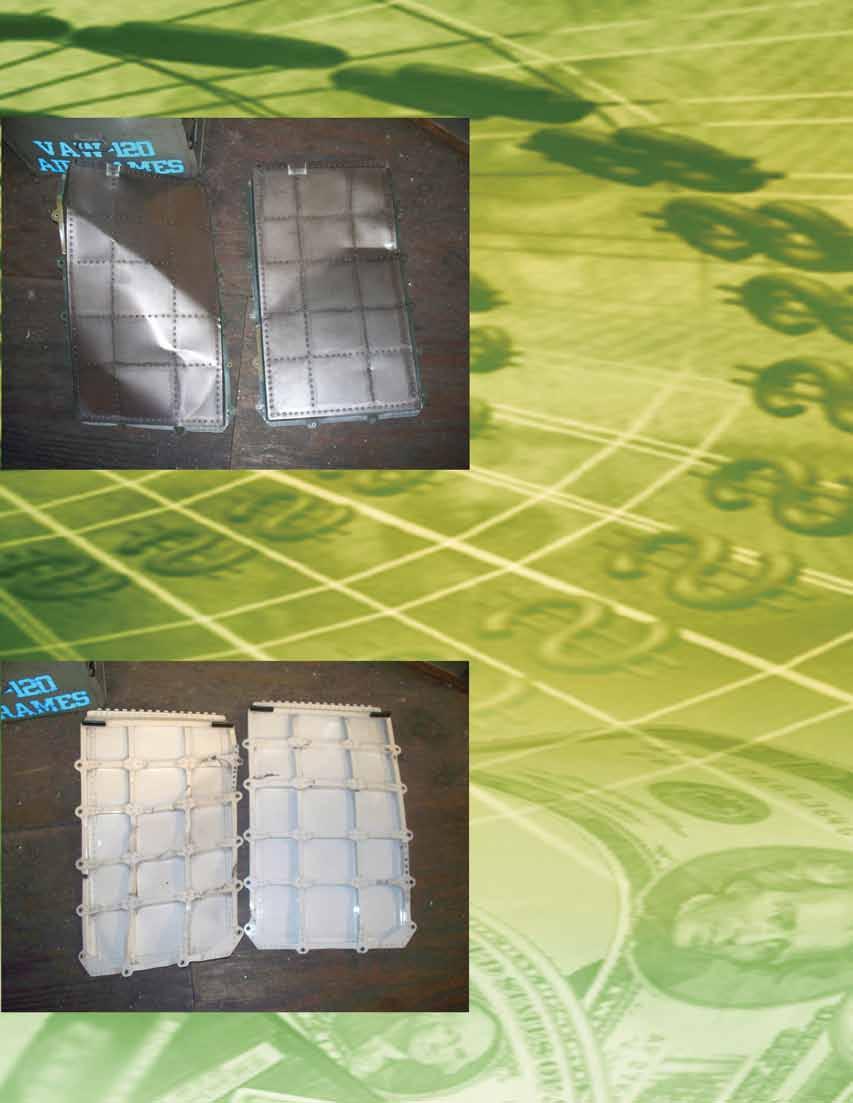
3 minute read
It” Happens
The photo below shows port engine access drop-down panel in the open position wedged against the sidewall of the airframe, (notice the un-secured fasteners).
By AM2 Stephen Loveless
Advertisement
While working the mid-shift on a typical busy night at the FRS, my working party was tasked with a routine operational check of the landing gear system following replacement of hardware on the launch bar. The night shift airframes shop already had placed aircraft 655 on jacks and completed the repair. As a CDI, I did a quick safety walk-around prior to the drop check. After hooking up the portable hydraulic test stand (T-15) to the aircraft, I completed an internal safety check and then attached the external electrical power cords. Aircraft 655 was up and ready for the operational drop check.
After getting an initial warm-and-fuzzy, I did one last quick walk-around while removing the landinggear safety ground locks. Once I thought all was well, I instructed a fellow AM2 to turn on electrical power and a qualified airman to turn on the external hydraulics. I commenced the operational checks of the landing gear system by signaling the operator in the cockpit to actuate five half-cycles of the gear to ensure that there was no air in the hydraulic lines, as well as to verify proper operation of the system before fully raising the landing gear. With the initial checks successfully complete, everything seemed to be looking good.
The photo above shows the damage to the inner section of the port and starboard engine access drop-down panels.

The damage to the outter section of the port and starboard engine is clearly visiable in the photo below.
I signaled for the personnel in the cockpit to take their hands off the controls for safety while preparing the launch bar system for operational and warning-light checks. After prepping the launch-bar system, I signaled for the landing gear to be fully raised. The landing gear moved to the up-and-locked position without any problems. After the cockpit operator lowered the landing gear, I inspected the launch bar system and again signaled for the landing gear to be raised once more while observing the launch bar system.
As the landing gear was in transition, I heard the sound of crunching metal and signaled for the gear to be immediately lowered. I looked over at the port landing gear and noticed that the engine access drop-down panel in the landing gear well hadn’t been in its proper “up” position and was severely damaged. After securing hydraulics to the aircraft, I noticed that the starboard engine access panel had also been damaged severely. Unfortunately, these panels are very hard to come by in the Hawkeye community.
I could have done several things to prevent this mishap. I thought I’d done a thorough walkaround, although, in my haste, I hadn’t. The fasteners that held the panels up in the wheelwell weren’t fastened all the way. As the drop check proceeded, they came loose and fell open into the path of the landing gear.
A wise old first class once told me always to take a hands-on approach (literally putting your hands on items to be checked, not just a visual inspection) when checking tools or doing any kind of operational check on gear. He was right.
If I’d taken this approach preparing for the drop check, I would have found the loose panels and the damage would have been avoided. Unfortunately, I was too interested in trying to get the job done quickly. A few extra minutes worth of pre-op would have saved several man hours from an already task-saturated airframes shop and would have spared the Navy thousands of dollars in replacement parts.
Petty Officer Loveless works in the airframes shop at VAW120.










